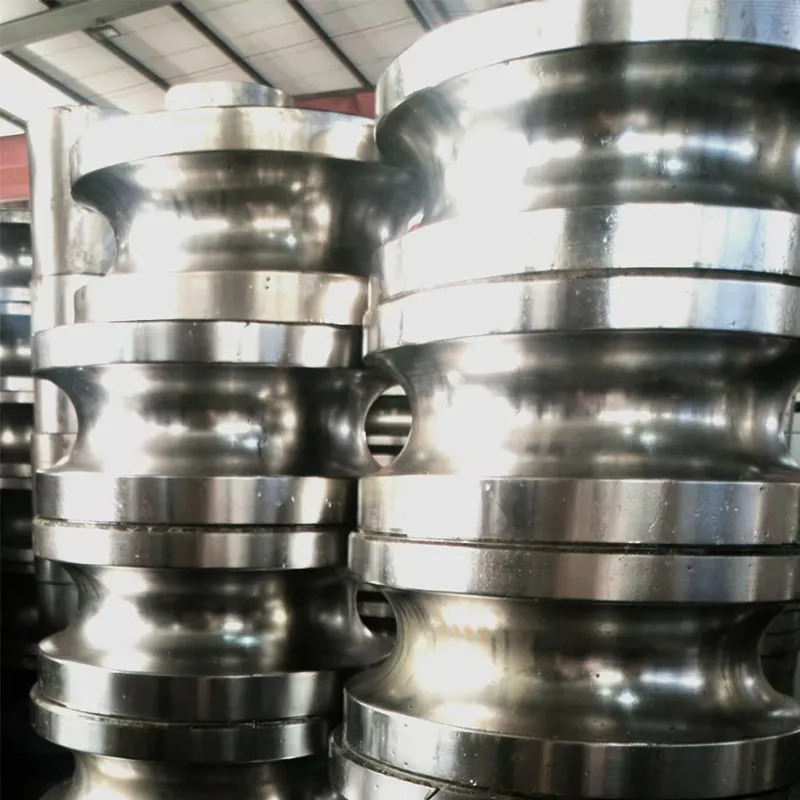cold rolling mill machine
Cold Rolling Mill Machine An Overview of Its Importance and Functionality
Cold rolling is a metalworking process that involves reducing the thickness of a metal sheet or strip by passing it through rollers at room temperature. This process is carried out using a specialized piece of equipment known as a cold rolling mill machine. Cold rolling is crucial in the production of various metal products, particularly in industries that require precise dimensions, enhanced surface finish, and improved mechanical properties.
Understanding Cold Rolling
At its core, cold rolling changes the physical properties of metals, allowing manufacturers to produce sheets and strips with varying thicknesses, including ultra-thin gauges. Unlike hot rolling, where the metal is processed at high temperatures to make it malleable, cold rolling engages the metal at or near ambient temperature. This method results in a substantial reduction of thickness without compromising the metal’s structural integrity.
Benefits of Cold Rolling
The cold rolling process offers several advantages, making it a favored choice in the manufacturing sector
1. Improved Surface Finish Cold rolling imparts a smooth surface quality, making the final product aesthetically appealing and suitable for various applications where surface quality is paramount.
2. Dimensional Tolerance With its high degree of precision, cold rolling achieves tighter tolerances compared to hot rolling, making it ideal for industries that require exact specifications.
3. Enhanced Mechanical Properties The cold working involved in the process increases the strength and hardness of the metal due to strain hardening, which is crucial for applications requiring durable materials.
4. Variety of Thicknesses Cold rolling mills can produce a wide range of thicknesses in metal sheets and strips, catering to diverse industrial needs.
5. Cost Efficiency Cold rolling can be more cost-effective than other manufacturing processes. It reduces waste in material and optimizes energy consumption since the heating step is eliminated.
Components of Cold Rolling Mill Machinery
A typical cold rolling mill consists of several key components that work in unison to deliver high-quality products
cold rolling mill machine

- Rolls The primary components that apply pressure to the metal. Depending on the application, different types of rolls (e.g., 2-high, 4-high, or 6-high) may be utilized to achieve the desired thickness and finish.
- Roll Gap Adjustment Mechanism This system facilitates the adjustment of the distance between the rolls, allowing for precise control over the thickness of the output material.
- Drive System Cold rolling mills are equipped with powerful motors and gearboxes to ensure the smooth operation and sufficient torque required for the forming process.
- Control System Modern cold rolling mills utilize advanced automation and control systems to monitor parameters such as pressure, temperature, and thickness. These systems enhance the operational efficiency and ensure consistent product quality.
Applications of Cold Rolled Products
Cold rolled products find applications in numerous sectors, including
- Automotive Industry For manufacturing body panels, frames, and structural components designed to withstand various types of stress.
- Construction Cold rolled sheets are used in roofing, siding, and other construction applications due to their durability and aesthetic appeal.
- Electronics In the production of components that require precision and reliability such as connectors, housings, and brackets.
- Appliances Cold rolled steel is frequently used in making appliances due to its strength, corrosion resistance, and surface finish.
Conclusion
The cold rolling mill machine plays a vital role in the manufacturing landscape by providing essential metal products with enhanced properties and quality. Through continuous advancements in technology, cold rolling processes are becoming more efficient, enabling manufacturers to meet the ever-growing demands of various industries. As the global market evolves, the significance of cold rolling mills will undoubtedly expand, reinforcing their position as a critical component in the production of high-quality metal products.
-
High Frequency Straight Seam Welded Pipe Production Line-BzZhou Xinghua Machinery Equipment Manufacturing Co., LTD.|Precision Welding, High EfficiencyNewsJul.30,2025
-
High Frequency Straight Seam Welded Pipe Production Line|BzZhou Xinghua|Precision Welding&EfficiencyNewsJul.30,2025
-
High Frequency Straight Seam Welded Pipe Production Line - BzZhou Xinghua|Precision Engineering&EfficiencyNewsJul.30,2025
-
High-Frequency Straight Seam Welded Pipe Production Line-BzZhou Xinghua Machinery Equipment Manufacturing Co., LTD.NewsJul.30,2025
-
High-Frequency Straight Seam Welded Pipe Production Line-BzZhou Xinghua Machinery Equipment Manufacturing Co., LTD.|Precision Manufacturing, High EfficiencyNewsJul.30,2025
-
High Frequency Straight Seam Welded Pipe Production Line-BzZhou Xinghua Machinery Equipment Manufacturing Co., LTD.|Precision Steel Pipe Manufacturing&Industrial EfficiencyNewsJul.29,2025


